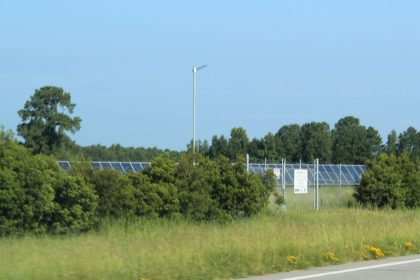New Report Shows Biden’s Energy Policies Could Save Lives and Money

A new report from Harvard University, Syracuse University, Georgia Institute of Technology and Resources for the Future looks at the energy, economic, environmental, and health outcomes of an illustrative Clean Energy Standard design that reaches 80% clean electricity by 2030 (80×30).
The analysis shows that achieving the Biden administration’s clean electricity goal through a CES would have modest costs and large benefits. Furthermore, if a CES were passed through budget reconciliation, many of the costs of the clean energy transition would shift to the federal government and electricity rates would likely fall.
The analysis is the first to map air quality and related health benefits for an 80×30 CES. The results show that they are widely distributed across all states in the coterminous U.S. and that the illustrative 80×30 CES has the largest total benefits, climate-related net benefits, and health benefits of eight policies examined.
The present value of the estimated climate benefits through 2050, $637 billion, outweigh the estimated costs of $342 billion. This 80×30 CES would also prevent an estimated 317,500 premature deaths between now and 2050 and generate estimated present value health benefits of $1.13 trillion due to cleaner air, bringing the estimated present value net benefits to $1.43 trillion for 2020 to 2050.
The analysis is the first to map at a county-level scale the changes in air quality and related health benefits for the lower 48 states. It compares an 80×30 policy scenario to a range of alternative policies for reducing carbon from the energy sector and finds it is the top performer in terms of net climate benefits (climate benefits minus costs) and total health benefits. The analysis is also the first to look at the health impacts of projected air quality improvements by racial and ethnic groups.
The additional health benefits from cleaner air are projected to be immediate, substantial, and widespread according to the researchers.
- Estimated 317,500 lives saved from 2020-2050 from reduced exposure to fine particulate matter and ozone
- 9,200 premature deaths avoided in 2030 when the policy reaches 80% clean electricity
- Estimated $1.13 trillion in health savings due to cleaner air between now and 2050
- Air quality improvements occur in every state by 2030
- Air quality improvements are projected to occur for all racial and ethnic groups. Nationally, non-Hispanic Black people are estimated to experience the largest reductions in average population-weighted pollution exposures.
The top ten states for premature deaths avoided in the year 2030 are projected to be: Ohio (771), Texas (737), Pennsylvania (582), Illinois (529), Florida (463), North Carolina (453), Indiana (441), Tennessee (424), Michigan (396), and Georgia (377).
The analyses in this brief were conducted over the last two years as part of the Clean Energy Futures project, an independent collaboration with researchers from Syracuse University; the Center for Climate, Health, and the Global Environment at Harvard T.H. Chan School of Public Health; Georgia Institute of Technology; and Resources for the Future.

























